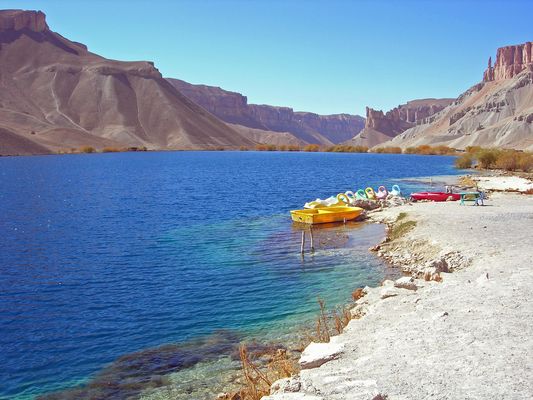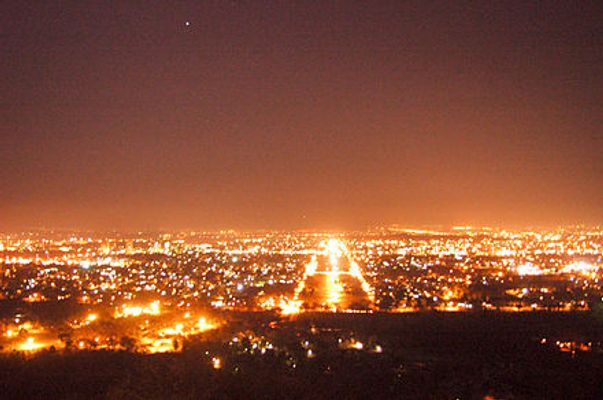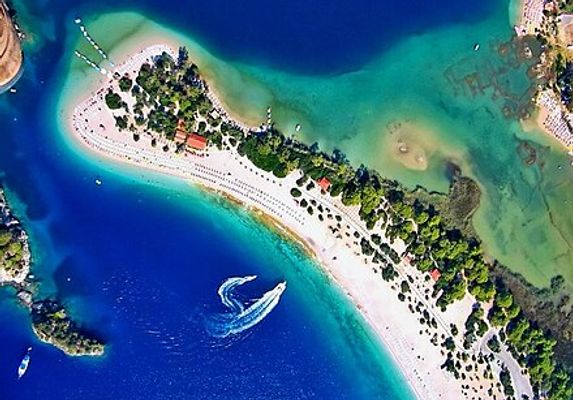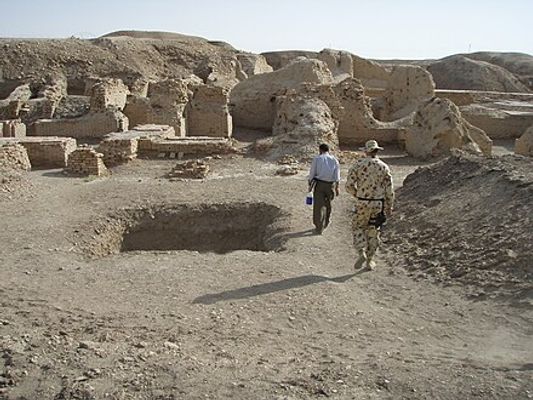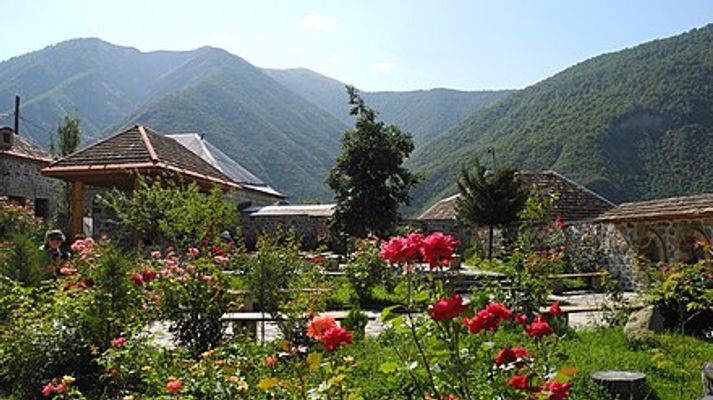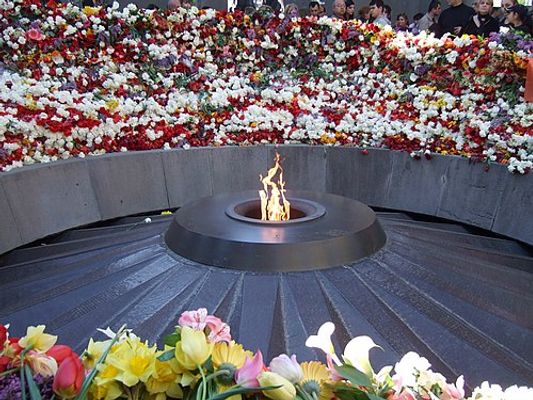
From Wikipedia: Iran (Persian: ایران) is a large country between the Gulf of Oman, the Persian Gulf, and the Caspian Sea. It was renamed Iran in the early 20th century; before that it was known as Persia. It is bordered by Iraq to the west, Turkey, Azerbaijan's Nakhchivan enclave, Armenia, and Azerbaijan to the northwest, Turkmenistan to the northeast, and Afghanistan and Pakistan to the east.
find another country
Who's been?
 #??
#?? #??
#??

Nearby countries
International Airports: ABD AWZ AJK ADU PGU BND XBJ BUZ GBT HDM IIL IFN KER KSH KIH ZBR LFM LRR MHD GSM RAS SRY SYZ TBZ IKA OMH AZD ZAH

Note to self

Arg of Karim Khan

[from en.wikipedia.org]: The Arg of Karim Khan or Karim Khan Citadel, is a citadel located in downtown Shiraz, Iran. It was built as part of a complex during the Zand dynasty. It is named after Karim Khan, and served as his living quarters. It is rectangular in shape and resembles a medieval fortress. In the past, the citadel was sometimes used as a prison. Today, it is a museum operated by Iran's Cultural Heritage Organization.

Meybod

[from en.wikipedia.org]: Meybod is a city in the Central District of Meybod County, Yazd province, Iran, serving as capital of both the county and the district. Meybod is a major desert city and the second most populous city in the province.

Tehran
Average temperatures
Jan
6.1°C-1.5Precipitation: 63.1 mm
Feb
8.1°C-0.2Precipitation: 66.5 mm
Mar
12.9°C4Precipitation: 83.3 mm
Apr
19.8°C9.8Precipitation: 50.1 mm
May
25°C14Precipitation: 27.1 mm
Jun
31.2°C19.6Precipitation: 4 mm
Jul
33.9°C22.6Precipitation: 4.2 mm
Aug
33.5°C21.9Precipitation: 3.2 mm
Sep
29.3°C17.5Precipitation: 3.4 mm
Oct
22.4°C11.6Precipitation: 16.5 mm
Nov
14.3°C5.4Precipitation: 41.3 mm
Dec
8.6°C1Precipitation: 66.3 mm

Isfahan
Average temperatures
Jan
8.8°C-2.4Precipitation: 17.1 mm
Feb
11.9°C-0.2Precipitation: 14.1 mm
Mar
16.8°C4.5Precipitation: 18.2 mm
Apr
22°C9.4Precipitation: 19.2 mm
May
28°C14.2Precipitation: 8.8 mm
Jun
34.1°C19.1Precipitation: 0.6 mm
Jul
36.4°C21.5Precipitation: 0.7 mm
Aug
35.1°C19.8Precipitation: 0.2 mm
Sep
31.2°C15.1Precipitation: 0 mm
Oct
24.4°C9.3Precipitation: 4.1 mm
Nov
16.9°C3.6Precipitation: 9.9 mm
Dec
10.8°C-0.9Precipitation: 19.6 mm

Kerman
Average temperatures
Jan
11.8°C-4Precipitation: 29 mm
Feb
14.2°C-1.1Precipitation: 26.7 mm
Mar
18.6°C3.4Precipitation: 32 mm
Apr
23.8°C7.9Precipitation: 19.5 mm
May
29.8°C12Precipitation: 8.6 mm
Jun
34.8°C15.6Precipitation: 0.5 mm
Jul
35.5°C17Precipitation: 0.7 mm
Aug
34°C14.2Precipitation: 0.6 mm
Sep
31°C9.8Precipitation: 0.3 mm
Oct
25.7°C4.8Precipitation: 0.7 mm
Nov
19.2°C-0.7Precipitation: 5.1 mm
Dec
14.1°C-3.6Precipitation: 18.4 mm

Qom
Average temperatures
Jan
10.2°C-1.9Precipitation: 25.4 mm
Feb
13.6°C0.6Precipitation: 20.5 mm
Mar
19.1°C5Precipitation: 27.7 mm
Apr
26°C10.5Precipitation: 20.2 mm
May
31.8°C15.4Precipitation: 10.4 mm
Jun
37.9°C20.2Precipitation: 2.3 mm
Jul
40.3°C23.4Precipitation: 0.7 mm
Aug
39.4°C21.2Precipitation: 0.3 mm
Sep
34.9°C15.6Precipitation: 0.8 mm
Oct
27.7°C10.3Precipitation: 6.2 mm
Nov
18.9°C4.1Precipitation: 14.3 mm
Dec
12.2°C-0.1Precipitation: 19.4 mm

Shiraz
Average temperatures
Jan
12.1°C-0.4Precipitation: 79.8 mm
Feb
14.7°C1.2Precipitation: 49.8 mm
Mar
18.9°C4.8Precipitation: 48.4 mm
Apr
23.8°C8.5Precipitation: 30.6 mm
May
30.6°C13.2Precipitation: 6.6 mm
Jun
36.1°C17.1Precipitation: 0.2 mm
Jul
37.8°C19.9Precipitation: 1 mm
Aug
37°C18.8Precipitation: 0.1 mm
Sep
33.7°C14.1Precipitation: 0 mm
Oct
27.8°C8.8Precipitation: 5.2 mm
Nov
20.5°C3.8Precipitation: 20.7 mm
Dec
14.4°C0.5Precipitation: 63.2 mm

Tabriz
Average temperatures
Jan
2.3°C-5.7Precipitation: 24 mm
Feb
4.9°C-3.9Precipitation: 28.2 mm
Mar
10.6°C0.6Precipitation: 45 mm
Apr
17°C6Precipitation: 56.6 mm
May
22.8°C10.7Precipitation: 43.1 mm
Jun
28.8°C15.4Precipitation: 19.4 mm
Jul
32.8°C19.3Precipitation: 5.6 mm
Aug
32.7°C19.1Precipitation: 3.3 mm
Sep
28.3°C14.5Precipitation: 10.9 mm
Oct
20.7°C8.4Precipitation: 24.5 mm
Nov
12°C2.1Precipitation: 30.1 mm
Dec
5.2°C-2.9Precipitation: 24.1 mm

Yazd
Average temperatures
Jan
12.9°C-0.3Precipitation: 7 mm
Feb
15.9°C2.2Precipitation: 0.8 mm
Mar
20.6°C7Precipitation: 11 mm
Apr
26°C11.5Precipitation: 21.9 mm
May
32.2°C16.8Precipitation: 0.6 mm
Jun
37.2°C21.7Precipitation: 2 mm
Jul
39.6°C23.8Precipitation: 0 mm
Aug
38.1°C21.8Precipitation: 0 mm
Sep
34°C16.9Precipitation: 3 mm
Oct
27.6°C11Precipitation: 0 mm
Nov
19.3°C4.2Precipitation: 2 mm
Dec
14°C-0.1Precipitation: 0 mm

Mashhad
Average temperatures
Jan
7.1°C-3.8Precipitation: 32.6 mm
Feb
9.3°C-1.8Precipitation: 34.5 mm
Mar
14.2°C2.9Precipitation: 55.5 mm
Apr
20.9°C8.4Precipitation: 45.4 mm
May
26.8°C12.4Precipitation: 27.2 mm
Jun
32.3°C16.4Precipitation: 4 mm
Jul
34.4°C18.7Precipitation: 1.1 mm
Aug
33.1°C16.5Precipitation: 0.7 mm
Sep
28.9°C11.7Precipitation: 2.1 mm
Oct
22.5°C6.4Precipitation: 8 mm
Nov
15.5°C1.9Precipitation: 16.1 mm
Dec
9.8°C-1.7Precipitation: 24.3 mm

Hamadan
Average temperatures
Jan
2°C-10.5Precipitation: 46.3 mm
Feb
4.3°C-8.2Precipitation: 43.6 mm
Mar
11.5°C-2.1Precipitation: 49.4 mm
Apr
18.1°C2.7Precipitation: 49.8 mm
May
23.9°C6.4Precipitation: 37.8 mm
Jun
30.9°C9.8Precipitation: 3.7 mm
Jul
34.9°C13.9Precipitation: 2 mm
Aug
34.2°C12.8Precipitation: 1.8 mm
Sep
29.8°C7Precipitation: 0.8 mm
Oct
21.9°C2.5Precipitation: 20.7 mm
Nov
13.7°C-2.1Precipitation: 26.9 mm
Dec
5.9°C-6.6Precipitation: 40.9 mm

Zahedan
Average temperatures
Jan
14°C-0.5Precipitation: 19.3 mm
Feb
16.5°C2.5Precipitation: 21.1 mm
Mar
21.9°C7.4Precipitation: 13.6 mm
Apr
27.5°C12.1Precipitation: 9.5 mm
May
32.5°C15.9Precipitation: 3.9 mm
Jun
36.2°C18.6Precipitation: 0.4 mm
Jul
37°C19.8Precipitation: 0.8 mm
Aug
35.6°C17.2Precipitation: 0.9 mm
Sep
32.3°C12.4Precipitation: 0.2 mm
Oct
27.7°C8.1Precipitation: 1.8 mm
Nov
21.7°C3.1Precipitation: 3.4 mm
Dec
16.3°C0.5Precipitation: 7.2 mm

Alamut
No climate information available.

Kish Island
No climate information available.

Qeshm Island
No climate information available.

Pasargad
No climate information available.

Persepolis
No climate information available.

Shush (Iran)
No climate information available.

Qeshm
No climate information available.







